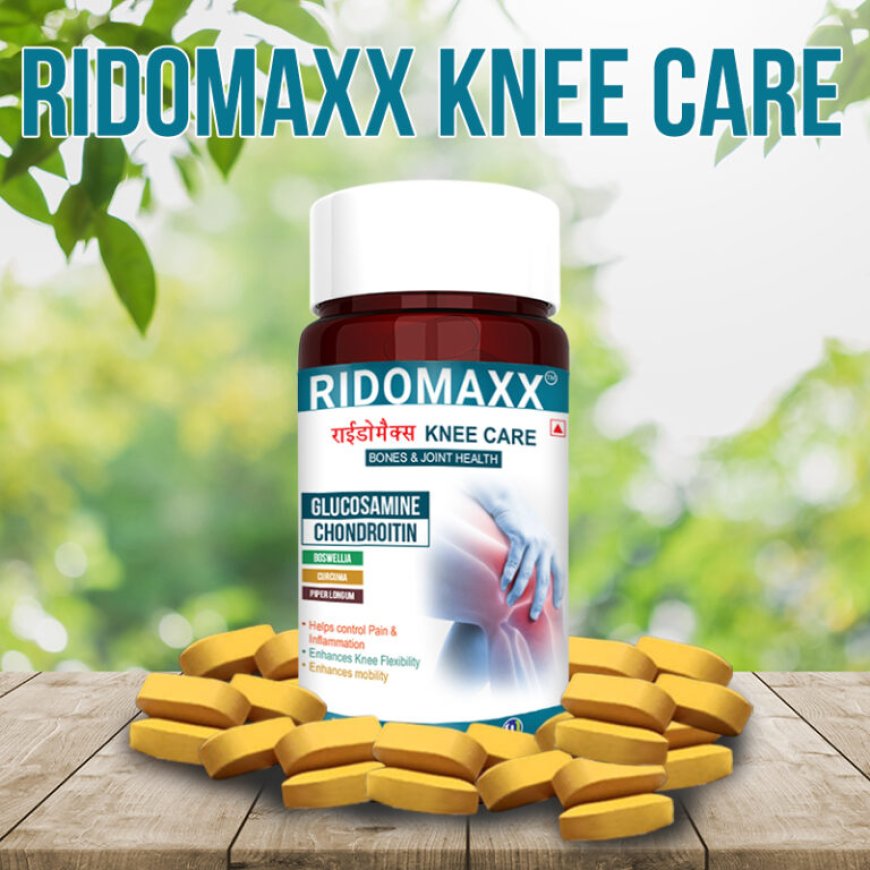Understanding Knee Pain: Causes and Solutions
Discover the causes of knee pain and explore effective solutions for relief. Learn about common issues and treatments to manage and prevent knee discomfort

Knee pain is a common issue that many people face, and it can come from different sources. Sometimes, knee pain happens suddenly due to injuries like fractures, torn ligaments, or damaged cartilage. These kinds of injuries usually cause immediate discomfort and require quick attention. Other times, knee pain develops slowly over time because of activities that put too much strain on the knees, like playing sports or doing repetitive tasks. This wear and tear can lead to long-lasting pain. Additionally, certain medical conditions, such as arthritis or gout, can also cause knee pain. These conditions may result in swelling, stiffness, and discomfort in the knee joint. To effectively manage and treat knee pain, it's important to understand its cause. This involves looking at factors such as how active you are, your overall health, and any past injuries. By identifying the root of the problem, you can find the right treatment to help reduce pain and improve knee function.

Here are some ways to understand knee pain: causes and solutions.
Causes of Acute Knee Pain: Knee pain can be caused by a variety of factors, including acute traumas and chronic illnesses. Trauma, such as fractures, ligament injuries, or meniscus tears, frequently causes instant discomfort. Overuse injuries, which are common among sports and active people, can cause wear and tear on the knee joint, leading to persistent discomfort. Furthermore, underlying medical disorders such as arthritis, gout, or infections can lead to chronic knee pain. Understanding the underlying cause of knee pain is critical for an accurate diagnosis and effective therapy. When determining the reason for knee discomfort, individual characteristics such as lifestyle, work, and overall health must be taken into consideration.
Knee pain can be baffling and debilitating for people of different ages and lifestyles. Understanding the many causes of knee pain is critical for optimal management and tailored treatment. Injuries:
-
Traumatic injuries: Sudden collisions or accidents can result in fractures, ligament tears, or meniscus injuries, generating immediate and often severe pain.
-
Overuse Injuries: Repetitive stress on the knee joint, which is prevalent among athletes and those who engage in intense activities, can lead to illnesses such as patellar tendinitis or stress fractures.
-
Gout: The buildup of uric acid crystals in the knee joint can cause sudden and severe pain, swelling, and inflammation.
-
Infections: Bacterial or viral infections of the knee joint can cause pain, warmth, and edema.
-
Misalignment: A misalignment of the kneecap (patella) or the entire leg can put uneven strain on the knee joint, resulting in pain and discomfort.
-
Instability: Ligament weakness or damage can cause knee instability, increasing the likelihood of injury and pain.
-
Weakness or Tightness: Imbalances in the muscles surrounding the knee can affect joint mechanics, causing pain. For example, weak quadriceps and tight hamstrings might have an impact on knee stability.
-
Excess Weight: Being overweight puts additional strain on the knee joint, increasing the likelihood of developing disorders such as osteoarthritis.
-
Lack of Physical Activity: A sedentary lifestyle can weaken the muscles that support the knee, leaving it more vulnerable to injury and pain.
How is knee pain treated?
The therapies required for knee pain will vary depending on the cause. A healthcare expert will recommend remedies based on the degree of the pain and its underlying cause. Here are some of the knee pain solutions:.
1.ICE technique for knee pain: Knee pain can easily be treated at home with the RICE approach.
Rest: Stop the physical activity that triggered the discomfort to avoid aggravating the injury.
Ice: Use an ice pack or cold compress for 15 to 20 minutes every hour for the first day following your injury. After one day, use ice every three to four hours. Do not place ice directly on your skin (cover it with a towel or washcloth).
Compression helps to minimize blood flow and swelling in your injured knee. Apply or wrap a compression bandage around your knee. A healthcare expert can demonstrate how to apply and wear a compression wrap properly.
Elevation: Maintain your knee above the level of your heart. You can elevate your knee using pillows, blankets, or cushions.
2.Medication for knee pain: Your healthcare professional may recommend drugs to alleviate your knee pain and other symptoms.
Most patients can use over-the-counter NSAIDs (ibuprofen, aspirin, and naproxen) or acetaminophen (Tylenol®). Do not use these medications for more than 10 days in a row without consulting your doctor, or if you have a kidney or liver illness.
3.Knee braces: A knee brace supports and holds your knee in place. Knee braces operate by keeping your knee in proper alignment. They are often made of rigid plastic or metal, with cushions and straps that wrap around your knee and leg. Your doctor will inform you of the style of brace you'll need and how frequently you should wear it.
4.Physical Therapy: If you have arthritis or are recovering from an injury, your healthcare provider may recommend physical therapy. A physical therapist will demonstrate stretches and exercises to strengthen the muscles surrounding your afflicted knee. This will increase your stability and potentially decrease pain.
5.Knee surgery: Surgery is typically not necessary for most knee pain cases. However, your doctor may recommend it if your pain is severe and other therapies have failed. You may need surgery to repair a broken ligament, a bone fracture, or severe arthritis.
The most common knee operation is arthroscopy. Your surgeon will make a few small incisions (cuts) in the skin around your knee before inserting a specialized tool called an arthroscope into the joint. The arthroscope contains a camera and a light, which allow your surgeon to inspect and repair damage inside your knee.
You may need a knee replacement (arthroplasty). Your surgeon will replace your knee joint with an artificial implant (prosthesis). If your knee pain and other issues interfere with your ability to stand, walk, and move, your provider may prescribe a knee replacement. Your surgeon will recommend either a whole or partial knee replacement. The type of surgery required is determined by the source of the discomfort and the areas of your knee that have been damaged.

Conclusion
Understanding the causes of knee pain is crucial for finding the right solutions and improving your knee health. Whether your pain comes from sudden injuries, overuse, or underlying medical conditions, addressing the root cause is essential for effective treatment. By identifying whether your knee pain is due to trauma, overuse, or a health condition like arthritis, you can take the right steps for relief. Incorporating good knee care practices, such as proper rest, exercise, and possibly medical treatments, can help manage and reduce pain. Regular knee care routines, including strengthening exercises and proper support, play a key role in maintaining knee health and preventing further issues. If you experience persistent knee pain, seeking advice from a healthcare professional can provide personalized solutions tailored to your specific needs. By understanding your pain and focusing on effective knee care, you can improve your quality of life and keep your knees healthy and functional.
What's Your Reaction?















